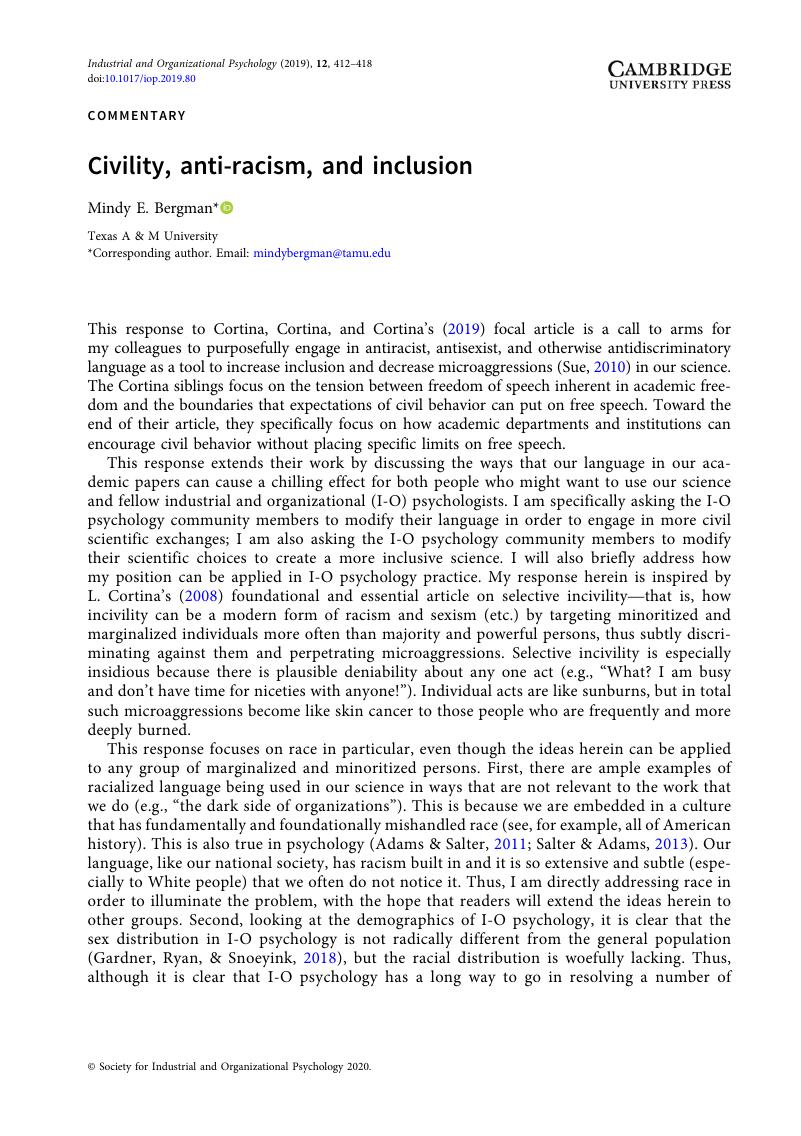Crossref Citations
This article has been cited by the following publications. This list is generated based on data provided by Crossref.
Kamimura, Naoto
Fujito, Ryoko
and
Kashibayashi, Tetsuo
2020.
Dementia and present driving status─Clinical problems about driving assessment for cognitive dysfunction.
Higher Brain Function Research,
Vol. 40,
Issue. 3,
p.
310.
McCluney, Courtney L.
King, Danielle D.
Bryant, Courtney M.
and
Ali, Abdifatah A.
2020.
From “Calling in Black” to “Calling for Antiracism Resources”: the need for systemic resources to address systemic racism.
Equality, Diversity and Inclusion: An International Journal,
Vol. 40,
Issue. 1,
p.
49.
Dierdorff, Erich C.
and
Fisher, David M.
2022.
Problematic personalities in teams: Implications for performance trajectories and resilience to unexpected change.
Personnel Psychology,
Vol. 75,
Issue. 3,
p.
589.
Brownell, Katrina M.
Quinn, Audra
and
Bolinger, Mark T.
2024.
The Triad Divided: A Curvilinear Mediation Model Linking Founder Machiavellianism, Narcissism, and Psychopathy to New Venture Performance.
Entrepreneurship Theory and Practice,
Vol. 48,
Issue. 1,
p.
310.





